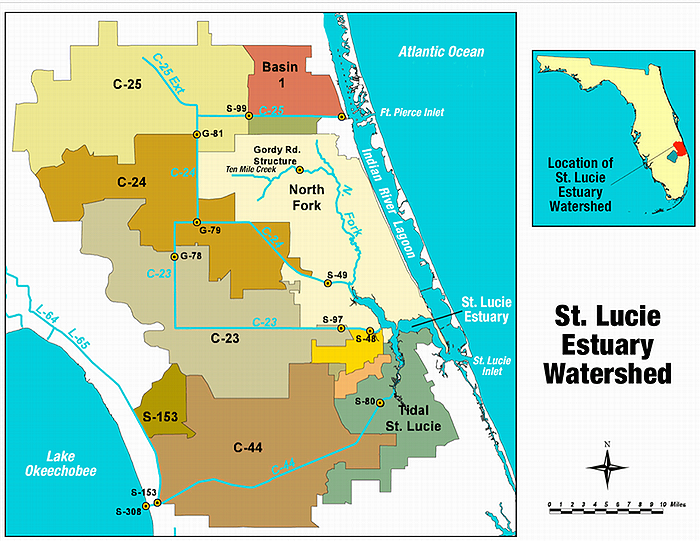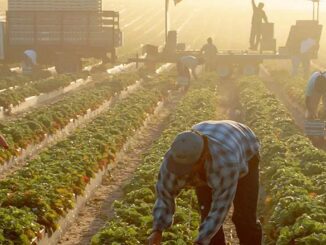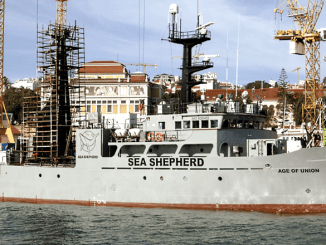
ORLANDO, Florida, February 26, 2022 (ENS) – “There is an ecological crisis in Indian River Lagoon. Large quantities of water with high levels of nutrient pollution from Lake Okeechobee and the St. Lucie Basin are being discharged to tide, leading to toxic algae blooms in the Lagoon’s waters,” warns the Florida branch of the National Audubon Society.
Now, state and federal authorities have taken the first step to ease polluted runoff entering Indian River Lagoon. The U.S. Army Corps of Engineers Jacksonville District and South Florida Water Management District hosted a groundbreaking event last Monday to celebrate the start of construction of a stormwater treatment area to relieve the nutrient load going into the Indian River Lagoon and the St. Lucie River.
“We are here with our outstanding partners at the South Florida Water Management to celebrate the Groundbreaking for the C-23/24 Stormwater Treatment Area, the first major construction feature of the Indian River Lagoon-South project to address the C-23 and C-24 basins in St Lucie County,” said Col. James Booth, U.S. Army Corps of Engineers Jacksonville District Commander.
“This is a watershed moment for us,” he said. “Three months ago, we completed construction on the C-44 Reservoir and Stormwater Treatment Area Complex, we’re putting C-23/24 components in the ground, and the Indian River Lagoon-South C 23/24 North Reservoir has been fully funded through construction under the Infrastructure Investment and Jobs Act, the largest single investment to date to restore and revitalize the Everglades in Florida. We’ve got incredible momentum right now!”

And so, construction begins on the 2,500 acre Indian River Lagoon South Canal-23/Canal-24 Stormwater Treatment Area. It will handle runoff from the two canals to reduce the sediment, phosphorus, and nitrogen going to the St. Lucie River Estuary and the southern part of the Indian River Lagoon.
The C-24 canal drains a primarily agricultural sub-basin into the North. Fork of the Indian River, while the C-23 canal drains a mix of residential and farmland in northwest Martin County and southwest St. Lucie County. The runoff, rich in nutrients from the farms also carries pollutants from the streets straight to the St. Lucie River.
Stretched along Florida’s Atlantic coast, called the “Treasure Coast,” or the “Space Coast” for the adjacent Cape Canaveral rocket launching facility, Indian River is not, in fact, a river. It’s a salt water estuary – part of an extensive lagoon system. A narrow strip of barrier islands divide the lagoon from the Atlantic Ocean..
The mix of salt and fresh water supports dolphins, pelicans and manta rays that prefer the saltier water, and manatees, alligators and otters that like the fresh water. Ocean beaches in the lagoon region attract some of the highest numbers of nesting sea turtles in the Western Hemisphere.
More than 4,300 species of plants and animals live in the Indian River Lagoon watershed. The lagoon is known as one of the most biodiverse habitats in North America and has been designated an Estuary of National Significance by the U.S. Environmental Protection Agency, EPA.
The lagoon contains five state parks, four federal wildlife refuges and a national seashore.
“We are so delighted to see this project started! Projects like this will turn the tide on the pollution problem in the Indian River Lagoon,” said Larry Williams, the State Supervisor for Ecological Services in Florida, with the U.S. Fish and Wildlife Service. “We all want a healthy environment with abundant fish and wildlife. The C23/24 features will deliver exactly those things.”
Together, the C-23/24 Basin features are expected to:
- – Capture local run-off from the C-23 and C-24 basins, reducing the nutrients flowing to the St. Lucie River Estuary and the southern portion of the Indian River Lagoon
- – Provide valuable open water, wetland, and upland habitat
- – Include thousands of acre-feet of new water storage, and
- – Divert excess water from the basin, helping to rehydrate the floodplain of the north fork of the St. Lucie River and to moderate flows to the estuary and improving salinities.
St. Lucie County Commissioner and Erosion Chair Frannie Hutchinson said, “This is an exciting time for St. Lucie County and the entire Treasure Coast as it seems all of our local, state, and federal agencies are all paddling in the same direction when it comes to addressing and funding water quality issues.”
Featured image: Indian River Lagoon (Photo courtesy U.S. Fish & Wildlife Service)
© 2022, Environment News Service. All rights reserved. Content may be quoted only with proper attribution and a direct link to the original article. Full reproduction is prohibited.



